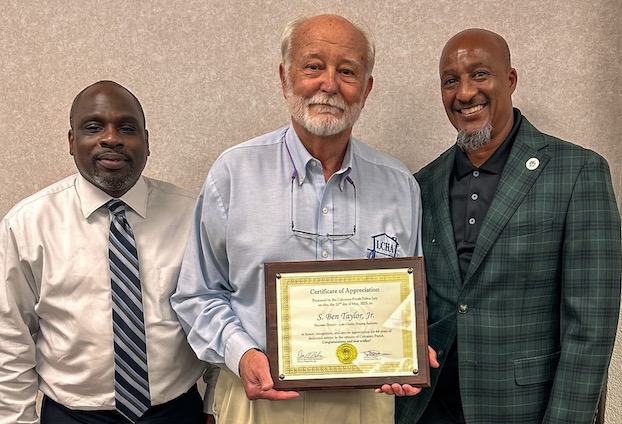BC-LA–Exchange-State Flower
Published 5:00 am Wednesday, March 25, 2020
By By DAN COPP, The Houma Courier
By The Associated Press
HOUMA — As coronavirus chaos grips the world, Laura Browning finds comfort in the flowers in her yard.
“My yard is my retreat from the rest of the world,” the Montegut resident said. “I don’t even hear the phone ring. I just like listening to the birds. I’ve always had a yard full of wonderful, gorgeous flowers.”
Browning’s property is populated by dozens of flora like roses, azaleas and mulberries, to name a few. One of the wildflowers that thrives there is the Louisiana iris.
Browning, a former school teacher, donated 350 of her native wild irises growing on her property last spring to the Greater New Orleans Iris Society to replenish the irises in the New Orleans area. Browning’s white and blue irises now bloom in City Park, Jean Lafitte National Park and other locations.
“The white species irises are what caught their attention in a big, big way because they’re very rare,” Browning said. “The blue irises used to grow wild in every ditch and waterway in Southeast Louisiana but they’re greatly reduced now.”
Browning said her late husband spotted the white irises while bird watching eight years ago in Lafourche and brought them home to her as a gift to add to her already vibrant garden.
According to the Greater New Orleans Iris Society, native species irises can still be found in freshwater swamps in low wild areas, but the natural spaces in which the wildflowers grow have diminished over the years.
The Louisiana iris is the official state wildflower of Louisiana.
Large fields of wild native irises once grew plentiful in Southeast Louisiana but salt water intrusion and development have blighted them, the organization said. The Louisiana Iris Restoration Project aims to save the wildflowers so that they may thrive once again so they can be planted back in the marshes that are now behind hurricane protection barriers.
“It’s an amazing project to be a part of,” Browning said. “I’m a plant person and probably have about 100 irises in bloom right now. My parents bought this property back in the ’50s and the irises have been growing there ever since I could remember. That’s one of the reasons why they were so fascinated by them because the irises were untouched. The irises are just an absolute joy for me.”
Gary Salathe, a member of the Greater New Orleans Iris Society, said Browning’s donations will benefit future generations to come.
“We’re reintroducing irises where they’re being killed by salt water and putting them in places where the public can see them,” Salathe said. “They used to be everywhere but are harder now for people to find unless you’re in a boat or kayak. We’ve donated over 2,000 wild native irises to Nicholls State University to propagate as well as part of a partnership with them formed in 2019. Louisiana irises will double in number every year. When someone gives us a donation of these native irises like this we can literally split them up and have twice as many each year because they double in number each year. Laura has thousands of them on her property.”
The Greater New Orleans Iris Society depends on donations of wild species irises such as Browning’s to help replenish them where they once grew in great numbers, Salathe said.
“The blue ones may be abundant in isolated areas of some swamps, but have disappeared or are significantly reduced in others because every time a storm comes out of the Gulf of Mexico salt water is pushed in to where the freshwater irises live, ” he said. “It’s all about preservation and restoration.”
When it comes to saving or growing native irises, Browning said she doesn’t hesitate to get her hands dirty.
“It’s astounding to be part of a group that’s so passionate about a native flower,” she said. “I never feel better than when I’m playing in the dirt.”





